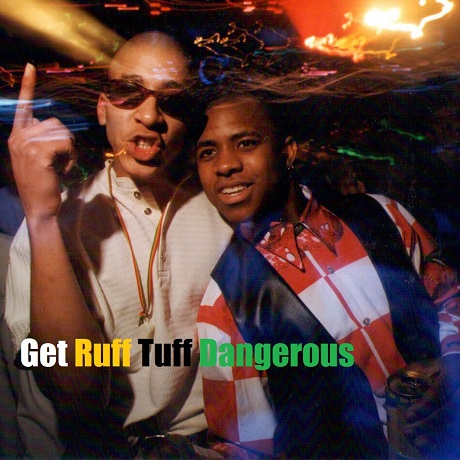Pearsall presents Get It 003: Get Ruff Tuff Dangerous
right-click, save as to download this free mp3 mix
Mixed in Berlin, January 2019
100% Vinyl
(46:22, 106 MB, 320 kbps MP3)
Style: New Skool Ragga Jungle
Direct link to the mix:
http://sonicrampage.org/mixes/getit3/Pearsall-GetIt003GetRuffTuffDangerous.mp3
Tracklisting:
Tracklisting:
01. Tim Reaper – The General (Sweet Sensi)
02. Kid Lib – Sub Machine (Lucky Muffin)
03. Specialist X – Jah Heart (Dubplate Championz)
04. Skitty – Sexy Sally (AKO Beatz)
05. Dub & Wheel – Guidance (93 Drum & Bass Mix) (Cool & Deadly)
06. Lavery – Dubplate Special (Side B) (Sub Code)
07. Sam Binga – Wasted Days ft Warrior Queen (Sully Remix) (SBSLS)
08. Moresounds – Warriah VIP (Astrophonica)
09. Kid Lib – Goodie Goodie (Dublinquents)
10. Sully – Amor (Rupture LDN)
11. X Nation – 9 Digit Roots (Foundation X)
12. Dead Man’s Chest – Avalon Dub (Western Lore)
13. Digital – Motherland (Function)
14. Dwarde – Hardcore Youth (Phat Bubba)
15. Dub-One – Inglis (Scientific Wax)
Cover image: One Nation, 1997; found here
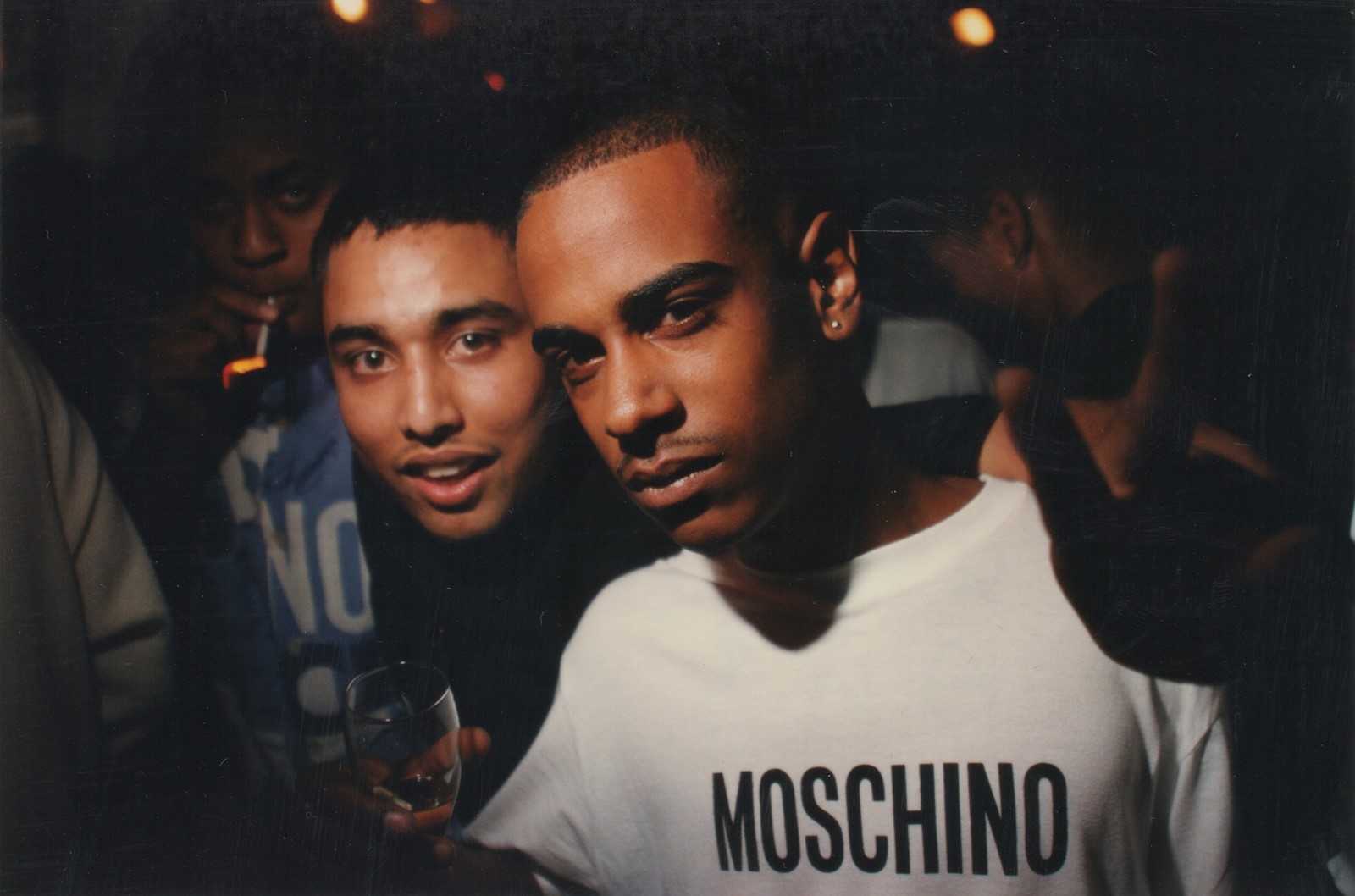
Boom! Welcome to 2019, and my first mix of the year. This is the third mix in my new series, Get It, which is all about fifteen track mixes of new vinyl, each time focused on a single genre. So far I have already done rugged house and electro, and now I am focusing on ragga jungle.
At the risk of repeating myself, over the last few years I have got back into buying modern jungle / drum n’ bass in a big way, so this is now the fifth mix of ‘new’ stuff I have done, following Stepping into Dusk, Out in the Streets, Fear the (Tim) Reaper and the biggest one yet, Drumwar. This one is specifically focused on ragga jungle, but I’ve interpreted ‘ragga jungle’ in the widest way possible, i.e. a track qualifies if it has some kind of Jamaican patois sampled in it.
Which might be cheating somewhat, but I don’t care.
When most people think about ‘ragga jungle’ usually they think of lots of ragga chat, reggae samples, gunshots, and tearing Amen drums. And obviously there are tunes like that on here, because I love that shit as much as any other aging jungle fan! But I am not sure that I want to listen to a full mix of crumpled-up breaks and hyperspeed ragga chat, hence I tried to vary things over the course of the mix. While sticking to the essential theme, of course.
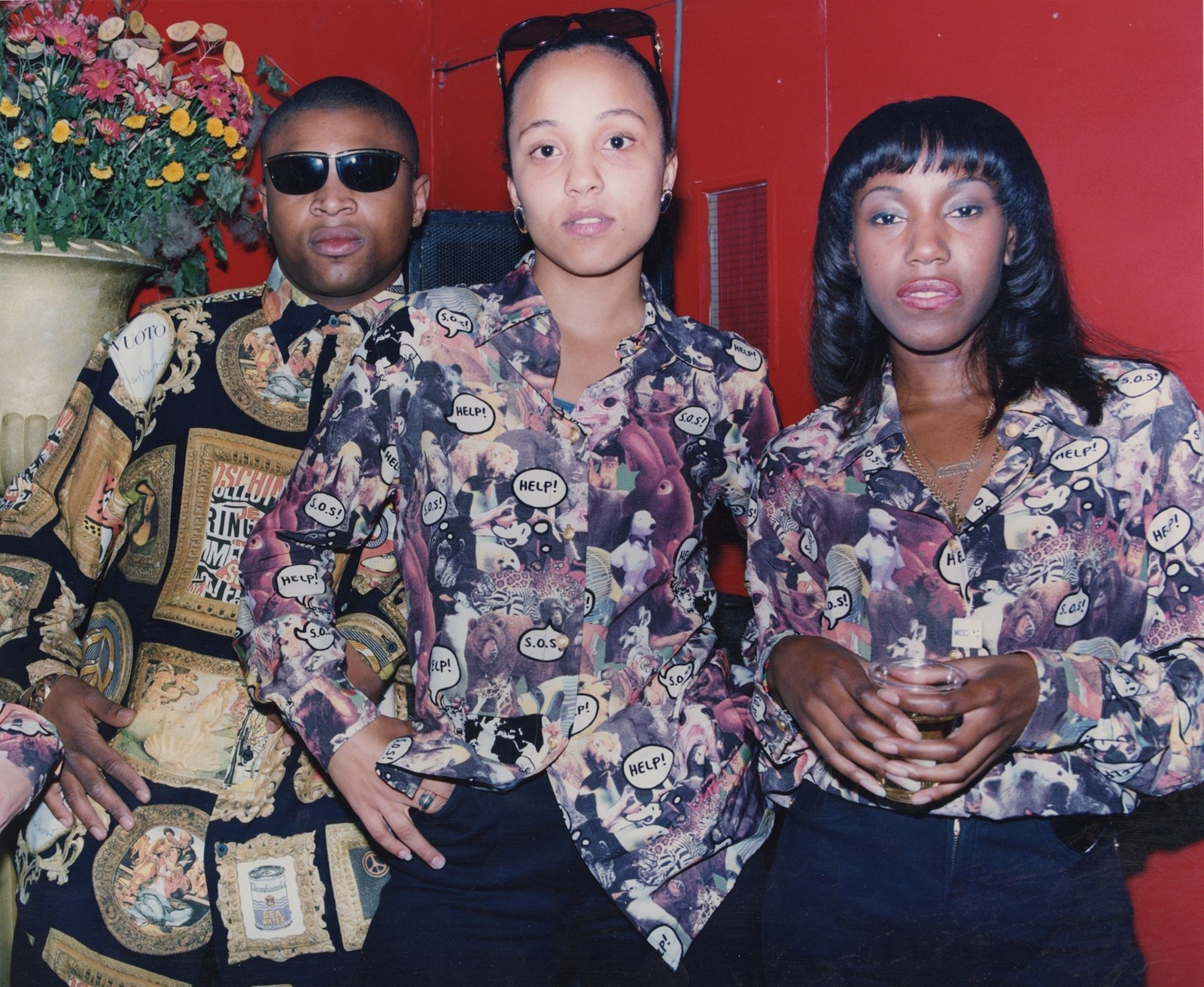
So why ragga jungle specifically and not just a generic ‘new jungle’ mix?
It’s probably because I want to ragga jungle is, above all, the fullest expression of jungle music’s debts to the Jamaican diaspora and their music and culture. And the story of Jamaica’s outsize influence on modern music is something that I have always found quite fascinating.
It’s one of the world’s smaller nations, with fewer than three million people living on the island itself, and it’s not exactly an economic superpower yet Jamaicans both at home and in the diaspora have played key roles in the development of many different styles of music, often in ways that are not really recognized. Hip-hop, jungle, UK garage, grime, dubstep, punk and reggaeton have all been heavily influenced by Jamaican ska, reggae, and dancehall. Even disco producers were influenced by the dub techniques of 1970’s Jamaican studio wizards like King Tubby and Lee ‘Scratch’ Perry.
To take hip-hop as an example, Kool Herc, the Bronx dj who is considered to be perhaps the first hip-hop dj, was a Jamaican who was inspired by reggae sound clashes to throw the South Bronx block parties that are now seen as crucial incubators for the development of hip-hop culture. New York City has always been one of the main hubs of the Jamaican community in the US, alongside Miami and Philadelphia, and it’s pretty impressive just how many famous old skool New York rappers come from Jamaican backgrounds – just off the top of my head that list includes KRS-One, the Notorious B.I.G., Busta Rhymes, Pete Rock, and Heavy D. Hell, even some of the biggest new rappers of recent years have been Jamaican-Americans, like Brooklyn’s Bobby Shmurda and Florida’s XXXTentacion, whose track ‘Look At Me’ sampled Mala’s dubstep classic ‘Changes’ (Mala, you won’t be surprised to hear, is a Londoner of Jamaican origins).
Beyond the children of the diaspora, musical innovations from Jamaica itself played a crucial role in the development of hip-hop, as this article explains:
Many of us are familiar with the technique of “scratching,” which is when a DJ uses records on a turntable to cause friction and create a rhythmic, high-pitched noise. Though this method became popular in New York’s South Bronx, it was actually created in Jamaica as “dubbing.” Reggae records would have an A-side of fully composed songs; the B-side would contain chopped-up remixes of the original songs that allowed the record cutters (the original DJs) to manipulate different components of the track.
The mastering of dubbing in reggae allowed an artist to “toast”—the predecessor to rapping or emceeing—over instrumental versions of songs. Jamaican DJs usually existed only to hype up songs, but dubbing pioneer King Tubby set a new standard with his emphasis on giving bass and rhythm a prominent spot on his remixes. Tubby commissioned DJ extraordinaire U-Roy to toast over his head-knocking mixes—which is recognized as the true creation of rapping. There is strong speculation that hip-hop’s forefathers—Barbados-born Grandmaster Flash, Jamaica’s Kool Herc, and Afrika Bambaataa—gained their inspiration directly by King Tubby and U-Roy.
The method of sampling from outside of hip-hop, which was popularized by West Coast legend Dr. Dre in the 90s and has been elevated by superstar Kanye West, was also birthed in Jamaica. Lee “Scratch” Perry was a Jamaican producer who invented “upsetter” rhythms—sound effects layered over, or in place of, beats. We can credit Scratch for the signature police sirens and gunshots heard in songs by early legendary groups such as Public Enemy and NWA, as well as many artists today. Upsetter rhythms provided the skeleton for the idea of sampling vocals and instruments to create new beats entirely.
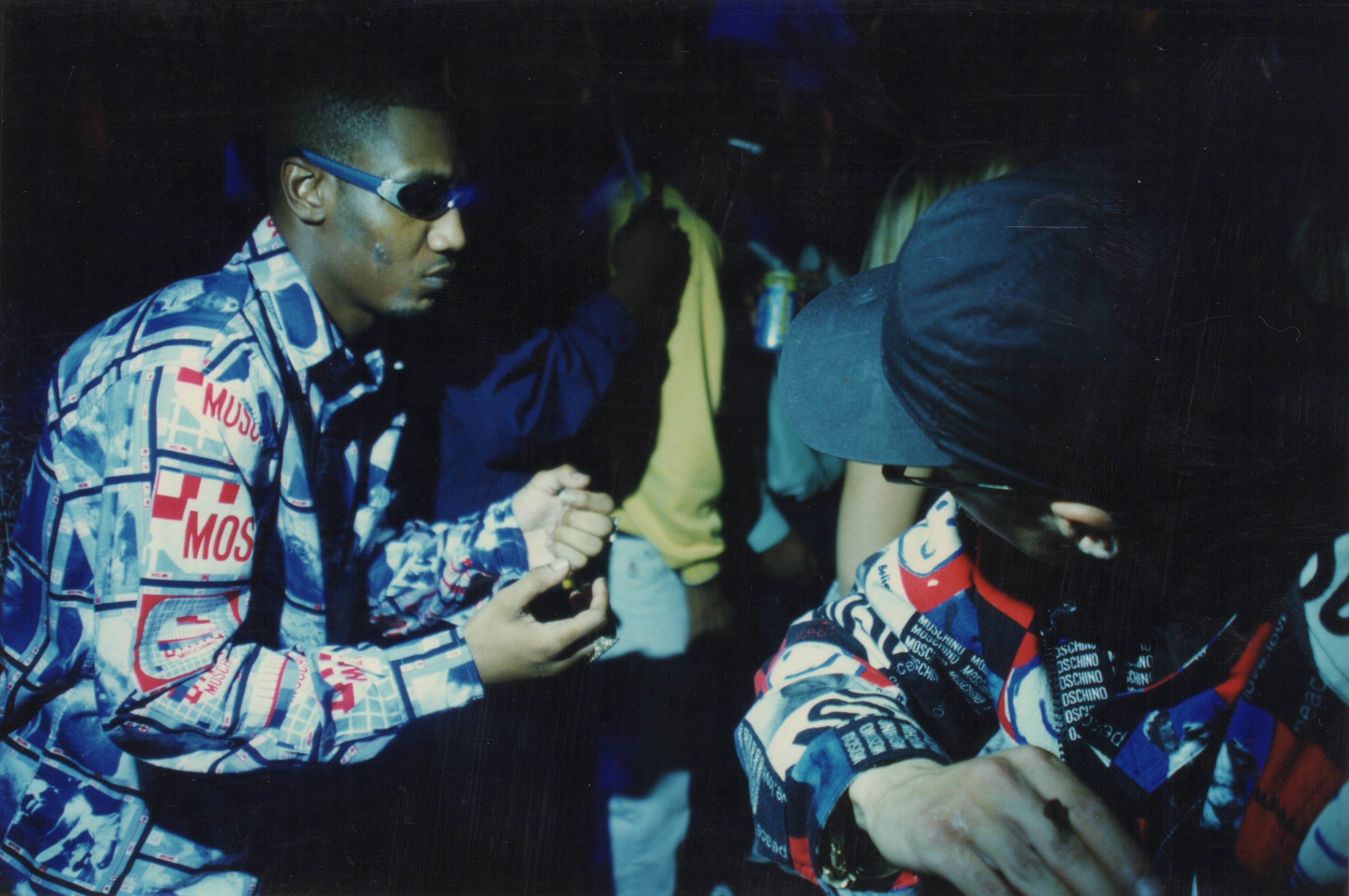
Pulling back from jungle specifically to consider wider musical trends within the Jamaican diaspora, you can see jungle as a kind of musical dialogue where British Jamaicans recombined Jamaican reggae and dancehall with American (yet heavily Jamaican-influenced) hip-hop. (Yes yes I know that jungle was a diverse scene and Jamaican Brits weren’t the only ones involved, sure, but you get the point). In this sense, Jamaica can be seen as one of the most creatively fertile nodes in what the academic Paul Gilroy has called the ‘Black Atlantic’.
Over the last fifty years the Jamaican community has had an impact on British popular music and culture that has been simply enormous, far out of proportion to the community’s size, starting in the 1960’s with the first craze for ska and developing in the 1970’s with reggae’s penetration of British life, especially via Bob Marley (who coincidentally had an English father), and the explosion of the Two-Tone phenomenon of multiracial ska bands in the wake of punk.
In the 1990’s jungle developed from hardcore as a more explicitly ‘street’ sound, with a more ‘black’ identity. Clearly jungle was a multiracial sound and scene, given how many of the key producers and dj’s were white, but it is also certainly the case that jungle had an image that was more black, both in comparison to the hardcore rave scene it was born from, and even more so when compared to rave’s other offspring, happy hardcore, which was very much a white working-class scene.
Jungle is in many ways a sonic Frankenstein’s monster, where chunks of hip-hop, reggae, and techno have been bolted together into one strange beast that has been fed a steady diet of crystal meth to ensure a frothing-mouthed level of intensity. Yet even amongst these disparate influences, it is clear that Jamaican musical culture plays a special role, with so many conventions borrowed wholesale, including dubplates, rewinds, VIP specials, and the role of MC as party host and instigator. The music is, of course, heavily indebted to reggae and dancehall, from the thunderous basslines to the dubby sound fx to the sampled ragga chat.
Simon Reynolds discussed the Jamaican influence in a 1995 New York Times article:
As a distinct style, jungle was spawned in 1991-92 when English producers started to add funky breaks to techno tracks, accelerating them to match rave music’s hectic pace. This hip-hop-techno hybrid caught on like wildfire and became known as hard core, because it was popular with the most wildly hedonistic ravers. Always a multiracial milieu, hard core began to attract more black British youth, who in turn brought Jamaican influences to the music. By 1993, Caribbean traits — the echo effects of dub reggae and the raucous vocals of 90’s dancehall — permeated the sound, and the term jungle began to displace hard core.
Some say the word originates in Jamaican slang, a junglist being a denizen of the concrete jungle. But jungle is also evocative of the voodoo frenzy of the beats and of the African nature of the music. Jungle’s complexity resides in its repetitive polyrhythms and low-end bass frequencies, as opposed to harmony and arrangement, as is the case with Western classical and pop.
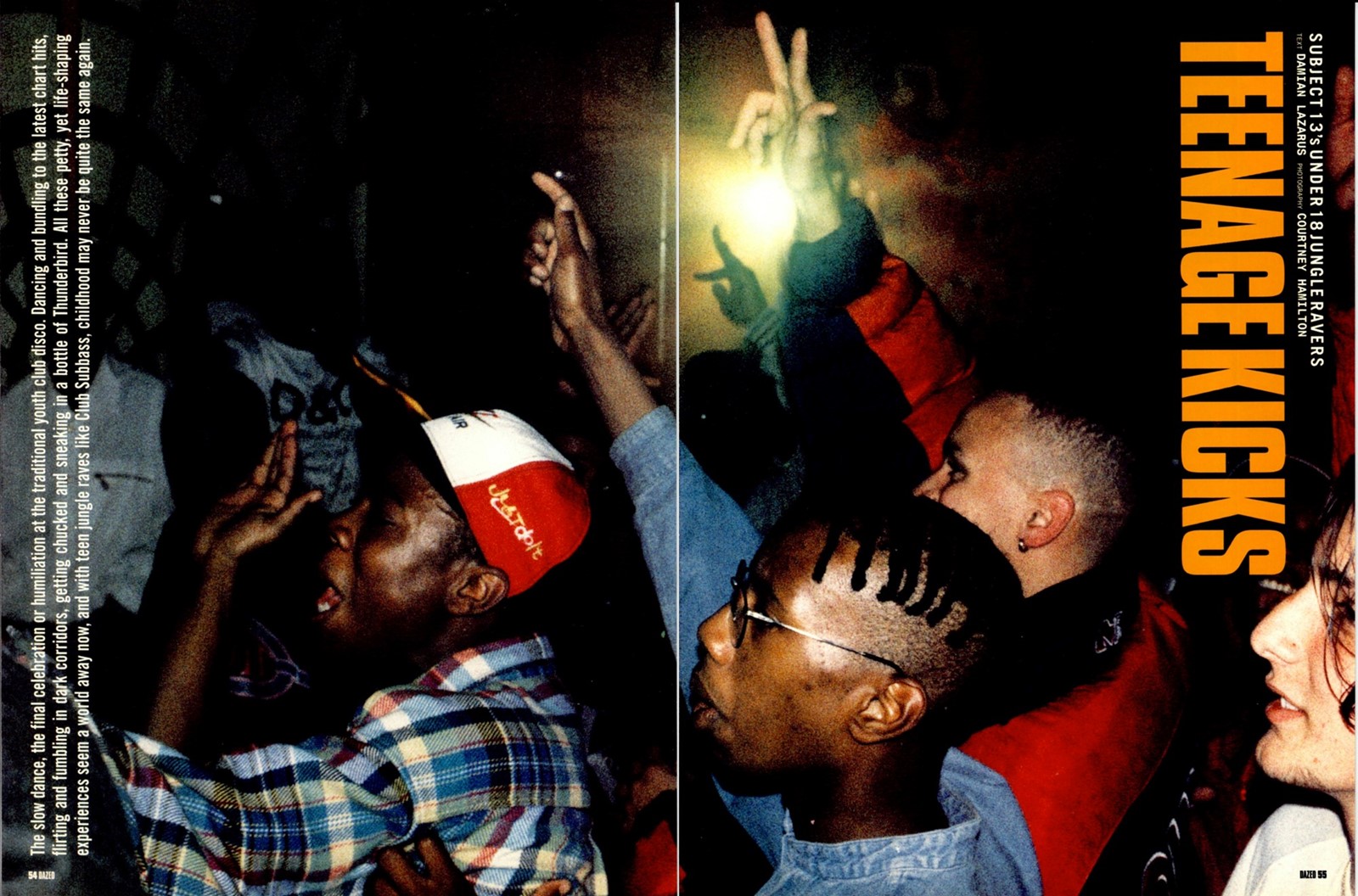
More controversially, jungle also had a reputation as a scene that attracted crime and disorder. I was that bit too young to attend jungle raves in the peak years of 1994 and 1995 so I don’t have a first-hand experience to say whether jungle raves were ‘rough’ or not (anyways, given my own background it’s not like I was the most streetwise teenager in mid-90’s London), but Mixmag alluded to the controversy in a 1994 article entitled Is Jungle too Ruff?:
While Quest is pretty much trouble free, there are reports of jungle clubs that are much rougher. Where people get attacked and where crack is openly used. This happened to me at a jungle night: Two 15 year olds spotted my friend’s little hash pipe and asked it they could use it. A moment later there was an unpleasant sweetish smell. “What are you smoking?” he asked. “Snood,” they replied, giggling inanely. “Snood?” “Yeah, snood, you know, snood, crack. You want some?”
Others argue that crack is seeping into all kinds of clubs – and that includes happy house venues. They argue that crack is targeted at black communities, that a lot to black kids go to jungle venues. That the ruffneck image of jungle is perhaps more likely to attract those involved in crack.
And while some complain that moody old jungle killed the happy vibes, others see it as the ultimate in street level sounds. Names for jungle nights like Ruffneck Ting abound because this is a ruffneck, inner city music and it demonstrates all the razor’s edge creativity that an inner city sound can.
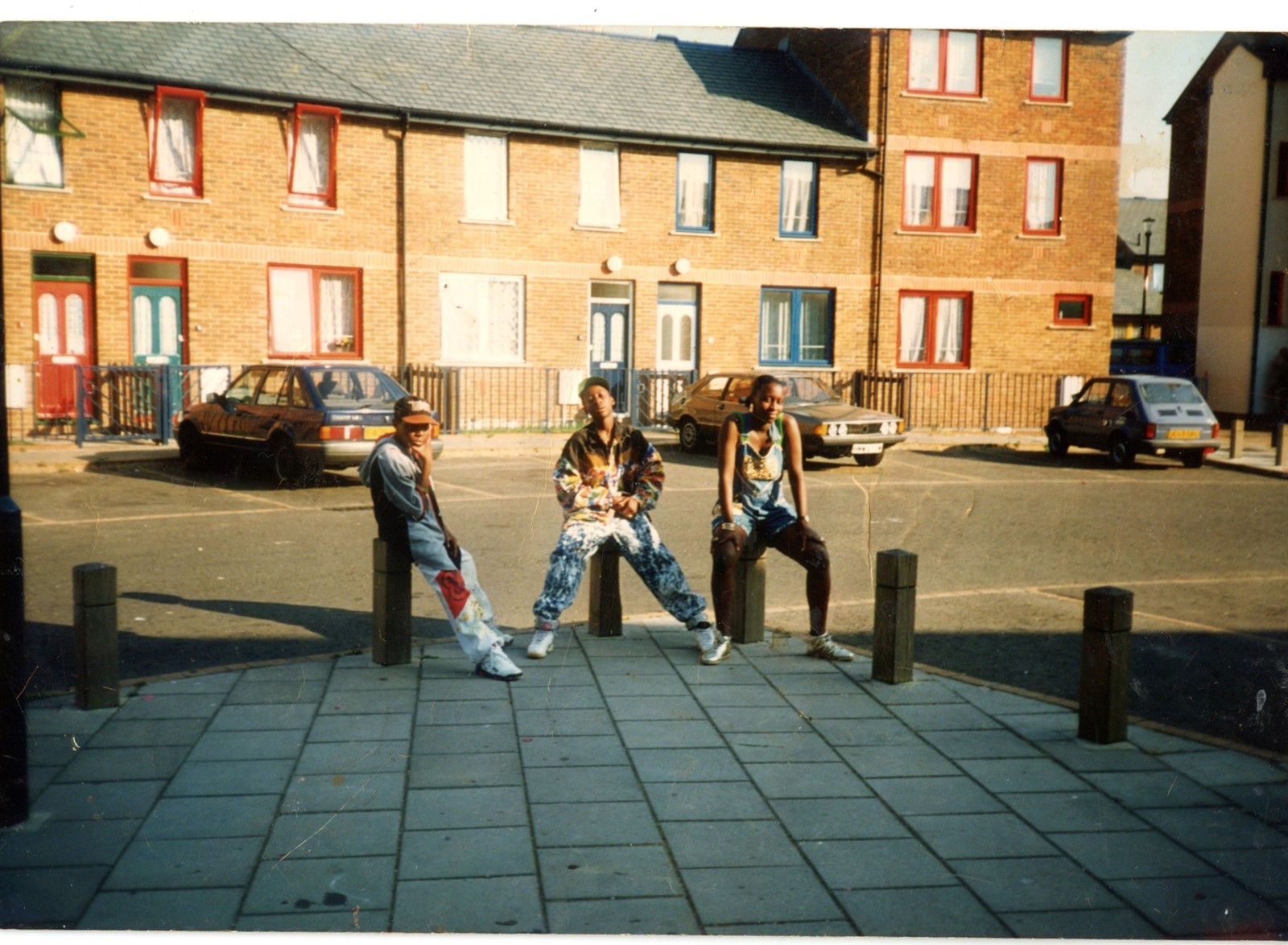
This last point is the most important one, in my opinion. Jungle was, above all, a volcanic explosion of creativity that reached beyond music to fashion and every day culture, and Jamaica’s influence on jungle was profound. Those old ragga jungle records still sound insanely thrilling today, and the new crop of producers that I have featured on this mix have revitalized the sound for modern times. I hope this mix has given you a little taste of just how exciting jungle music can be!
PS: As a bonus nod to the Jamaican diaspora’s influence, consider how influential Jamaicans have become in hyper-diverse Toronto, where Torontonians from all kinds of backgrounds (like Drake!) now drop bits of patois into everyday speech:
Caribbean culture has become so influential in the city that bits of the patois language and the accent that goes with it have filtered down to much of the rest of the population, including Drake, creating what both linguists and visitors to the city notice as a very distinctly suburban Toronto sound. South Asians in Mississauga respond to questions with ahlie as an affirmation or to state skepticism. Croatians in Malvern will say from time in reference to something that happened long ago. Somalis in Rexdale will greet each other with a wah gwan? rather than asking what’s up.
Everywhere they go Jamaicans influence others – it’s pretty remarkable and pretty cool. Anyways, since it made me laugh, here’s a video from some Toronto-area Jamaican-Canadian comedians that shows off the distinct patois-influenced Toronto slang to full effect:
